December 13, 2022
Today on Microsoft Flight Simulator, I’ll be flying the Boeing 247, considered by many the first modern airliner, but one that fatefully lost out to a rival that – had Boeing played its cards right – didn’t need to exist.

I’m here at San Francisco International Airport, where on May 22, 1933, a 247 belonging to United Airlines – at that time a subsidiary of Boeing – departed on its record-setting 19.5-hour inaugural transcontinental journey to New York.

The Boeing 247 carried 10 passengers, plus a flight attendant who sat on a fold-out seat on the rear bathroom door, in an unpressurized cabin.

What made the 247 “the first modern airliner”? First of all, it had a partially self-supporting all-metal (anodized aluminum) body and wings, which was only just coming to replace wood and fabric airplanes.

Second, it had fully cantilevered wings, which means they did not require the external bracing wires that had been common, and created a great deal of drag.

This led to one inconvenience: the two spars supporting the wings cut through the main cabin, and had to be stepped over by the passengers getting to and from their seats.

The 247 had retractable landing gear to further reduce drag in flight, another feature only just coming into use.

It had trim tabs, visible on the inside trailing edge of the elevators and rudders on its tail, to alter their default position and reduce the pressure the pilot had to apply on the controls during a long flight.

It also had deicing “boots”: inflatable rubber edges on the leading edge of the wings, which could be expanded to break up ice that had formed there, posing a major hazard.
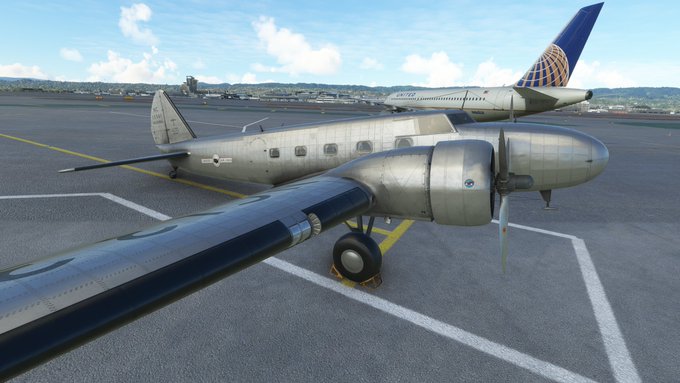
Originally planned to carry 14 passengers with two 700hp Pratt & Whitney Hornet engines, the Boeing 247 was downgraded to two 625hp Wasp engines, which pilots felt were easier to handle. This was to prove a consequential mistake.

Here you can see the cowling removed for maintenance. The model is this airplane in MSFS 2020 is quite detailed, both in appearance and function.

On the other side, you can also see the battery compartment on the wing opened for maintenance. The model in MSFS 2020 requires you to regularly change the oil to avoid overheating.

The cockpit holds two crew, the captain to the left and the co-pilot to the right. I discovered that the gyroscopic heading indicator has to be set to the magnetic compass before each flight, or it won’t read correctly.

Between the two pilots, the two orange knobs are the throttle (for each engine). The red levers to the left are the propeller pitch controls, and the red levers to the right are the fuel mixture controls. The landing gear lever is the red one near the bottom.

Getting this Boeing 247 fueled, oiled, and loaded involves several steps that must be managed from the cockpit.

First we’ll get half the baggage loaded in the nose compartment.

Then the other half loaded in the rear cargo compartment, so they balance. A major part of airline revenue in the 1930s, as the signage on the tail suggests, came from government contracts to transport air mail.

Finally it’s time to welcome our 10 passengers onboard, to take their seats in the sound-proofed and air conditioned (though unpressurized) cabin.

Starting up each engine is a far from simple process, and I had to study and practice it several times before I got it right. It starts by making sure the magnetos are on and the fuel lines open.

Then you need to make sure the selectors in front of you are switched to the correct engine. We need to start up one engine at a time.

To save weight, the engines have no automatic electrical started. The flywheel has to be wound up by hand by a mechanic outside, standing on a ladder, while the pilot uses a hand pump to get the fuel flowing.

When the flywheel is wound, it’s time to engage the gear, and the engine should start. Should start. If you’ve done everything right. Otherwise it coughs to a stop.

Hey, look, I’ve got one going! Now my mechanic needs to climb the other ladder and we go through the same process again.

Here we go, taxiing to the runway. The 247 rests on a tailwheel, so on the ground I need to boost myself up a little to see over the nose.

Very excited and ready for takeoff. But, wait, what the hell is this? My left engine has stopped. When I pulled the throttle back to idle, it cut out.

Then in my rush to get the engine started, I must have done something to set the other engine on fire.

“This is your captain speaking. We have a little bit of a problem that’s going to interfere with our flight today.”

Alright, I started over and got that situation fixed. As I said, this is a highly detailed model and you really have to be gentle with it. But I think we’re ready for takeoff.

We’re off from San Francisco and the gear is up. We’ll be starting our beverage service shortly.

You’re going to need a beverage or two, because the range of the Boeing 247 is only 745 miles, which means it’s going to take several stages of refueling stops to get across the country to New York.

We’ve crossed San Francisco Bay heading east, climbing to a typical cruising altitude of 12,000 feet. Reducing my fuel mixture makes a noticeable difference to power as we climb.

But we’re eventually going to have to go higher to cross the Sierra Nevada. The 247’s service ceiling is just over 25,000 feet.

Besides sight, how do we navigate across country in the 1930s? Overhead in the cockpit is a radio that can be set to a network of radio beacons across the country.

Each beacon sends out Morse code signals to four quadrants. If you’re to one side, you’ll hear “N” (dash-dot) over the radio. To the other, you’ll hear “A” (dot-dash). If you’re “flying the beam” to the beacon, the two codes will overlap and you’ll hear a solid signal.

This system was replaced in the 1950s by improved beacons such as VORs that provide more directional information, and are only now being phased out in favor of GPS. Back in the day, though, there was even a board game called “Flying the Beam”.

It’s several hours later and I’m pushing my way across the Rocky Mountains just west of Denver, Colorado.

The Boeing 247’s ceiling isn’t high enough to let me fly over the weather, like modern airliners, so I have to go through it.
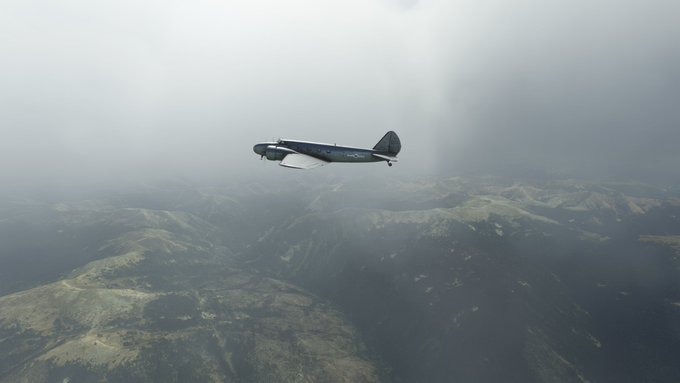
At nearly 15,000 feet above sea level, the air is cold and my windows are starting to frost over. I’ve noticed my airspeed slowing down, which means ice must be forming.
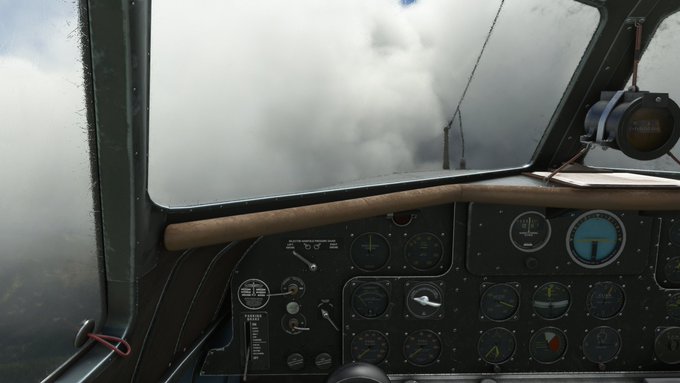
I turn the deicing equipment on, and that appears to help. But for a while, I’m flying blind, completely reliant on my instruments to stay straight and level over the mountains.

I make it out the other side into the clear.

But it’s still hard to see out my frosted-over windows.

Fast-forward 16.5 hours and I’ve reached New York after several stops – a new record, beating any other plane before it.

That was a full eight hours faster than its predecessors, like the Ford Trimotor or Curtiss Condor.

The 247 was poised to revolutionize air travel, and Boeing knew it. So it reserved the first order, for an unprecedent 60 planes, to its affiliate United Airlines, for $3.5 million, or $60,000 each.

Landing at LaGuardia, at the time known as Glenn H. Curtiss Airport (LaGuardia would only become mayor the next year, in 1934). I’m not exactly sure what the stall speed is, but I think it’s around 70 mph or so.

TWA also wanted to order the 247, but Boeing declined, flexing its muscles to favor its in-house airline and give it what it believed would be a critical advantage. It wouldn’t turn out that way.

Boeing and United wanted the 247 all to itself. Every other airline could wait its turn.

In the meantime, back in Seattle, Boeing ramped up production of the 247.

To promote United’s record-beating service with the new 247, Boeing sponsored Roscoe Turner, the three-time winner of the Thompson Trophy, to fly it in the 1934 MacRobertson Air Race from England to Australia.
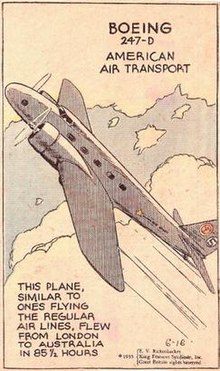
Roscoe Turner was a flamboyant character with matinee-idol looks, including a big waxed mustache, who flew with a lion cub he raised called Gilmore.

We join his airplane, #57, here at RAF Mildenhall where the race began, now a major US air base. He named his two engines “Nip” and “Tuck”.

He dubbed the airplane the “Warner Brothers Comet” because of his close association with the Hollywood film studio, where he often performed as a stunt pilot.

We’ll briefly follow the course of Turner’s 247 as it made its way to the other side of the world. But first we’ll wave to this F-15.

The race started at dawn on October 20, 1934.

There was no limit to the size of aircraft or power, and no limit to crew size, but no pilot could join aircraft after it left England.

There were five mandatory stops along the way: Baghdad, Allahabad, Singapore, Darwin, and Charleville in Queensland. I’m going to also assume that Turner passed the optional stops that were stocked with pre-positioned fuel and supplies, though I’m not sure.

Passing over the English Channel into France …
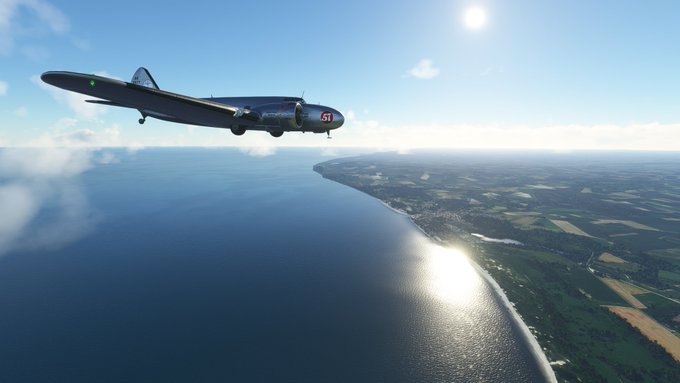
…. and south to Marseille, on France’s Mediterranean Coast before turning east …

… flying over the Tiber and the Coliseum in Rome …

… and on to the Acropolis in Athens, Greece …

… reaching Aleppo in Syria …

… and the flat irrigated plans outside of Baghdad in Mesopotamia …

… then onto the Straits of Hormuz at the mouth of the Persian Gulf …

… approaching Karachi in Pakistan, then British India …
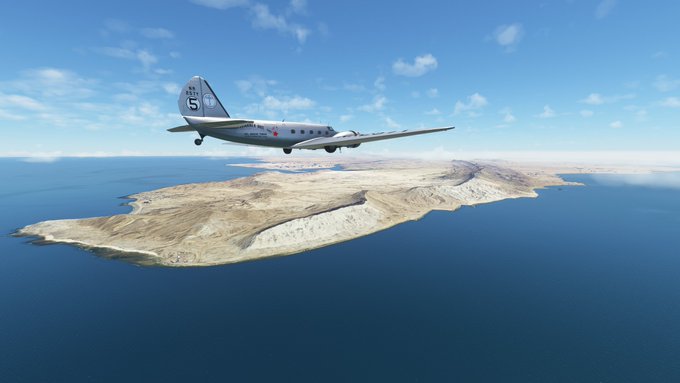
… Jodhpur in Rajasthan …

… Allahabad (now Prayagraj), site of the confluence of the Yamuna and Ganges Rivers, a sacred pilgrimage for Hindus …

… and a foggy day over Calcutta, with the Tank reservoir below and Howrah Railway Station across the river …

… reaching the outskirts of Rangoon in Burma …

.. overflying the royal palace and Wat Arun in Bangkok, Thailand …

… encountering an afternoon thunderstorm in Singapore …

… passing the volcanos and lush fields of Bali, in Indonesia (then the Dutch East Indies) …

… and finally reaching Darwin, at the northern edge of Australia …

… crossing the sparse expanse of the Australian Outback near Charleville …
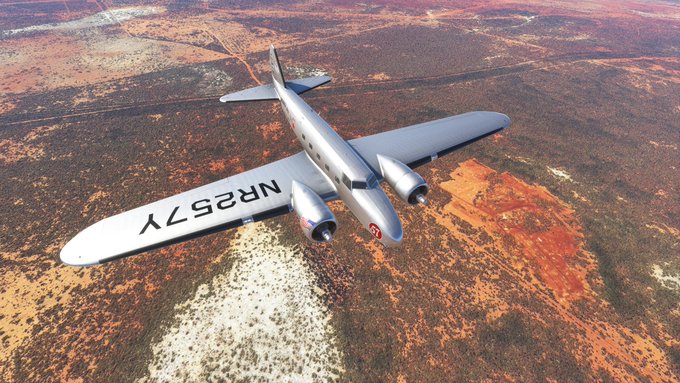
Finally, approximately 11,300 miles and just shy of 93 hours later, Roscoe Turner and his Boeing 247 reached their destination in Melbourne, Australia.

They were not the winner of the race. In fact, they came in 3rd, behind a specially designed DH.88 Comet, representing Britain, and a Douglas DC-2 from the U.S.

And therein lies the entire story, because while they touted Roscoe Turner’s performance, the Boeing 247 had lost more than just a race with the Douglas Aircraft Company.

Remember TWA? Spurned by Boeing, which refused its early order for 247s, it turned to Douglas to ask them to design an alternative. The result was the DC-1.

The prototype DC-2 quickly gave way to the improved DC-2, which could seat 14 passengers (a crucial 4 more than the Boeing 247) and had a larger range of 1,000 miles. Orders poured in from other airlines as well.

By 1935, Douglas was producing a larger version, the DC-3, which could carry up to 32 passengers for a non-stop range of 1,400 miles – almost double the Boeing 247.

The DC-3, which came about solely because Boeing had spurned TWA to favor its subsidiary United, became the gold standard in airliners. Douglas had 800 civilian orders before World War II, then produced over 10,000 during the war as military transports.

By 1937, Lockheed was also producing its own all-metal airliner, the L-10 Electra, which carried 10 passengers but with better performance and cost-per-mile than the 247. Over 3,000 were made. You can read my post on it here.

By contrast, a grand total of 75 – yes, seventy-five – Boeing 247s were ever produced, nearly all of them for United. By trying to lock up the market, Boeing had locked itself out of the market.

And while United would keep flying the Boeing 247 into the 1940s (the livery shown here), Douglas would dominate the civilian airliner market for almost two decades, until Boeing introduced its jet-powered 707 in 1958.

Boeing would soon lose control of United Airlines as well, when aircraft manufacturers were forced to divest their affiliated airlines by the Roosevelt Administration in 1934. Though in the long run, those that survived (like Boeing) ultimately benefited from the independence.

United did sell some of its Boeing 247s to Western Air Express, which flew mainly from Salt Lake City to California, and eventually became Western Airlines (which in 1987 merged into Delta).

Another airline that acquired some Boeing 247s was Pennsylvania Central Airlines, which flew its all-red airplanes out of Pittsburgh. But by 1937, it had sold them all for DC-3s, though two of them remain preserved in museums today.

As for international orders, Boeing sold two 247s to Lufthansa … and two to China – which raises a whole new interesting story.

The customer for this special private order was Zhang Xueliang, “the Young Marshal”, the 35-year-old son of Zhang Zuolin, warlord of northeastern China.

He named one of these Boeing 247s the “Bai-Ying” (White Eagle) and used it as his personal transport.

And so we join him and the White Eagle in December 1936, on a flight from his home base in Shenyang to the central Chinese city of Xi’an, on a journey that would change history.

At that time, Japan was expanding its control over Manchuria and northern China. But China’s nationalist leader, Chiang Kai-shek, was focusing all his efforts on wiping out what he saw as the bigger threat: Mao Zedong’s Communists, which he had boxed in at Yan’an.

Zhang Xueliang had come to Xi’an to meet with his ally Chiang Kai-shek. But really he came on another mission, which he had secretly coordinated with Mao and his Communists.

In the days ahead, Zhang would kidnap Chiang and hold him hostage for nearly two weeks, forcing him to make a ceasefire with the Communists and join forces with them to resist Japan.

Chiang had no choice. He made the ceasefire, the Communists survived and regained strength, and ultimately defeated him in the civil war that followed their “allied” victory over Japan.

As for the “Young Marshal”, once Chiang was released he had loyal troops place Zhang under house arrest. There he would remain for 50 years, first on the Mainland, then in Taiwan, until he was allowed to emigrate to Hawaii in 1995. He died there in 2001, age 100.
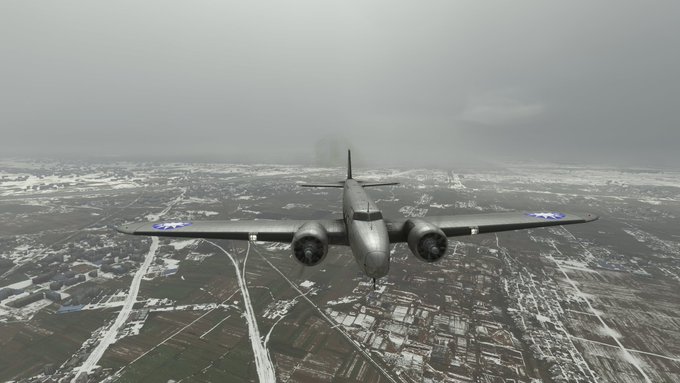
I can feel the White Eagle icing up in the winter weather, on my downwind approach to land at an airbase near Xi’an.

In fact, I can hardly see through the front windshield.

But somehow, the White Eagle made it safely on the ground.

And the door is open for Zhang Xueliang to walk out of his personal Boeing 247 and into history.
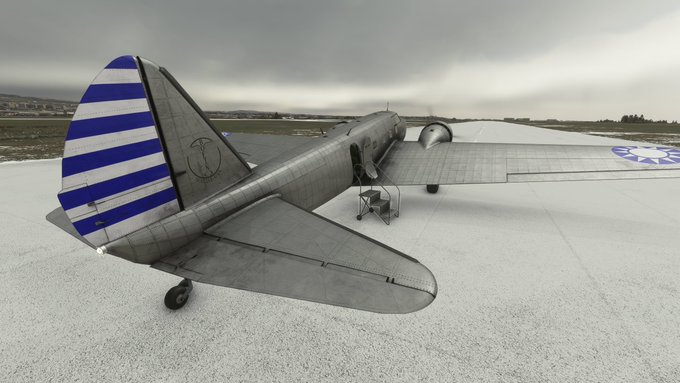
There is one more story to tell about the Boeing 247, and it’s about this plane: DZ203.

Unlike the DC-3, only a handful of 247s saw military service in World War II, mostly as small transport or liaison planes. This one originally served in the Canadian air force, before being transferred to Britain.

First it was used in a series of experiments to develop airborne radar. Later in the war, it was used to develop new ways of “landing blind” in poor visibility. I’ve waited for night to fall and the fog to close in to demonstrate.
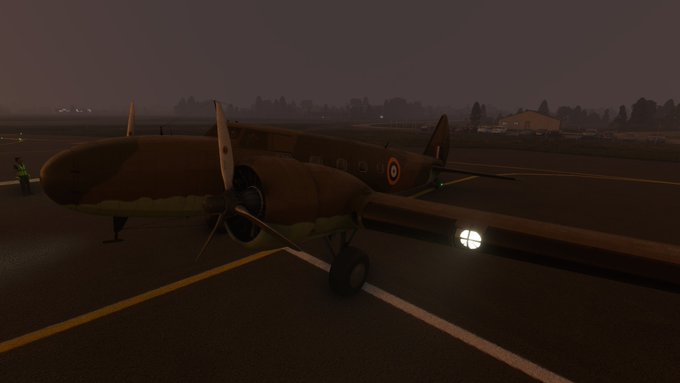
On January 16, 1945, DZ203, operating out of RAF Defford, made the first fully automated approach and landing in history, using a system that formed the basis for modern ILS (Instrument Landing System), plus a radio altimeter to instruct it when to flare.

The feat was repeated a month later in actual night and heavy fog conditions. For the first time, a plane was able to land itself.

Sadly, DZ203 was later damaged when a hangar collapsed in a snowstorm, and scrapped. But the legacy it left behind affects every airliner flying today.

If you’ve ever visited the Smithsonian National Air and Space Museum and seen this airplane hanging from the ceiling, now you know what it is. It’s the same Boeing 247 that Roscoe Turner flew from England to Australia, repainted in the United Airlines colors it later bore.

But even in honored retirement, its pride of place still finds itself subordinated to the DC-3, placed directly above it. The enduring judgment of history on an airplane that paved the way for – but failed to become – the symbol of modern air travel.

And with that, I hope you enjoyed this post on the Boeing 247.
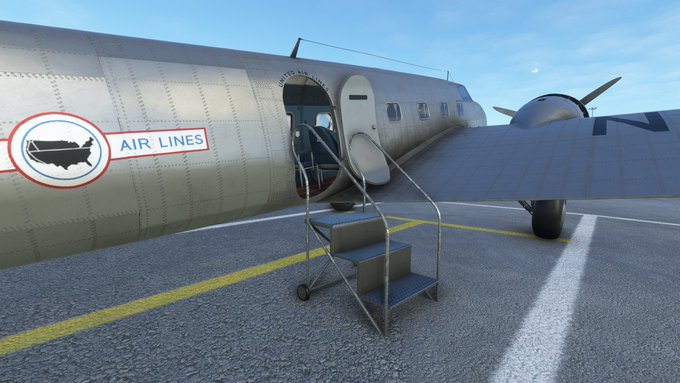
Leave a Reply